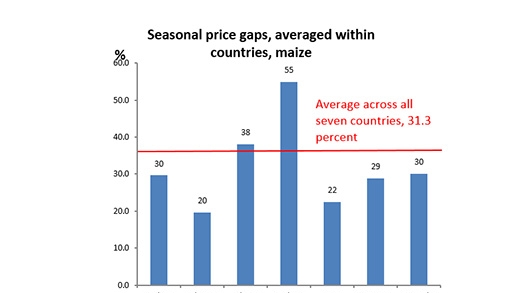SUMMARY
The issue
Seasonality (in food prices and consumption) was much studied in the 1990s and shown to be associated with significant fluctuations in hunger and nutrition within a given year. Since then the topic has largely disappeared from the policy debate as well as in project design and the academic literature.
The analysis
Against this background, this study (two papers) systematically revisits the question of seasonality in Sub-Saharan African livelihoods. It examines the extent of seasonal patterns in food prices as observed during 2000-2012 across 196 market locations in seven countries (Malawi, Tanzania, and Uganda, Ethiopia, Niger, Burkina Faso and Ghana) for a range of food products. While essentially descriptive in nature, the papers fill an important empirical void in the current understanding of the evolution of food prices and consumption across seasons. They apply time series econometric methods to administrative market price information to control for price trends; they systematically look across different food crops, markets (wholesale and retail) and agro-ecological settings; and for three countries (Malawi, Tanzania and Uganda); they further exploit the Living Standard Measurement Study-Integrated Surveys on Agriculture (LSMS-ISA) to explore how the seasonal price fluctuations affect (food) consumption patterns.
The Results
Overall, the findings suggest that the current neglect of price seasonality and the inability of households to smooth their consumption fully across months within each year may be premature. Through econometric analysis of monthly food price series across 196 locations in seven countries during 2000–12, it is shown that:
- Averaging across food crops, regular seasonality appears to contribute around 14 percent of overall food price volatility in the seven countries examined, with wholesale prices during the peak months estimated to be 28 percent higher than those during the troughs.
- While some seasonality in food prices is natural given storage costs, the levels observed in the domestic markets of the study countries in this paper are two (maize) to three (rice) times higher than those in the international markets.
- There is a strong negative association between price seasonality and fluctuations in both food and non-food consumption within a given year. This indicates that a large proportion of African households have a limited ability to smooth consumption, and that there are good indications
- that such fluctuations may partly follow from an excessive seasonal behavior of staple prices.




